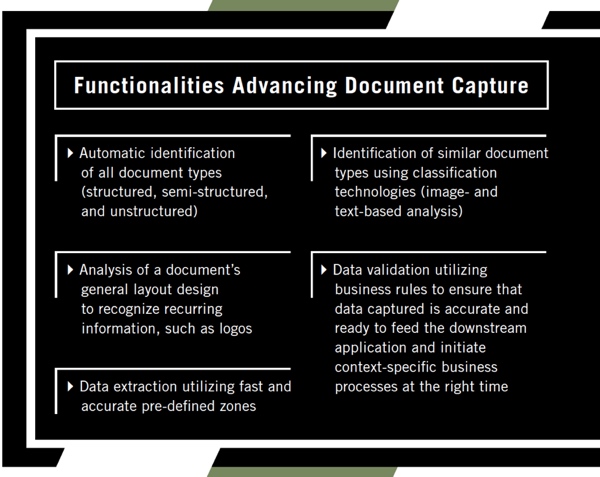
Image by: sidmay, ©2016 Getty Images
Organizations receive thousands of inbound communications via mail and email every day—many of which are business documents, such as enrollment forms, applications, claim forms, and other correspondence, that need to be processed in a timely fashion by the right business group. In many instances, organizations use manual, labor-intensive processes for sorting and routing these documents to their respective business groups. It also risks exposure to security concerns, which can lead to non-compliance and litigation risk if these documents are lost or routed to wrong business groups.
For example, imagine the plight of a workers’ compensation insurance carrier with over $1B in annual revenue. Assume this insurance carrier receives 1,650 bills and 20,000 related documents for claims processing on a daily basis. These documents additionally require 35 manual paper sorts prior to being manually keyed into the claims processing systems. With document capture processes in place, this company could benefit from automatic document identification technologies, including anchors for image analysis and advanced keyword classifications. Companies can avoid labor-intensive, manual sorting while classifying received documents and routing them to the right business group more efficiently.

©2016 DOCUMENT Strategy Media
Document capture systems enable organizations of all sizes to take information from electronic, faxed, and paper sources and turn these documents into usable, digital content that is ready to be accessed, stored, shared, and worked on throughout every level of the organization. The implementation steps for data capture technology can include analysis and design, construction, validation, and deployment, with development of test cases and samples. Beyond automated document classification, document capture solutions can also perform automated data extraction from structured, semi-structured, and unstructured documents, automating the manual keying of information into business systems.
Businesses today need to master defining, configuring, capturing, classifying, and connecting data from a variety of documents. As digital transformation continues to command attention from leading enterprises, it is essential for organizations to leverage effective document classification to meet the growing demand for conducting business in the digital age.
Elangovan Ekambaram is a lead technology strategist for Paragon Solutions’ Insurance and Financial Services practice and is responsible for architecting, designing, building, and delivering enterprise solutions. For more, visit www.consultparagon.com.











